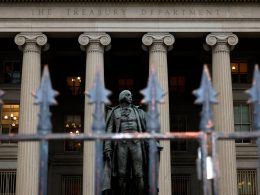The electric vehicle industry is booming in China, with two major players vying for supremacy: Tesla and BYD. While Tesla has been a dominant force in the global EV market, BYD has emerged as a formidable competitor on its home turf. In this blog post, we’ll take a closer look at the battle for dominance between these two companies and explore what’s driving their success in China’s rapidly growing EV industry. Whether you’re an investor or just curious about the future of transportation, you won’t want to miss this showdown between two of the most exciting names in electric vehicles!
The History of Tesla and BYD
Tesla and BYD have been locked in a battle for supremacy in China’s electric vehicle industry since Tesla first entered the market in 2006. Now, with Tesla’s recent struggles, BYD has emerged as a strong competitor.
The history of Tesla and BYD is unique because they were both founded in China. BYD was founded by Wang Chuanfu, who was formerly the president of Sanyo Electric Company. Tesla was founded by Nikola Tesla in 2003.
Both companies started out making small cars, but quickly moved on to making more ambitious vehicles. In 2013, Tesla released the Model S, which became the company’s most successful model. The Model S was able to achieve 592 miles per charge and had a starting price of $70,000.
The Model S was followed by the Model X in 2015, which had even higher performance specifications and boasted an impressive range of over 300 miles per charge. However, it wasn’t until 2017 that Tesla started to experience significant financial difficulties. This led to several high-profile layoffs at the company and caused its stock prices to fall significantly.
BYD has also experienced success over the past few years. In 2013, it released its first electric car, the QinQiEV300S. Since then, it has released several other models that have achieved impressive sales numbers. For example, the QinQiEV200L achieved 494 sales within a month of its release and remains BYD’s best-selling
The Current State of the Electric Vehicle Industry
The electric vehicle industry is booming in China, with both Tesla and BYD leading the pack. Tesla has been dominating the North American market, while BYD has been leading the Chinese market. However, this may soon change as Tesla plans to enter the Chinese market, while BYD is taking its fight to Europe. Here’s a look at the current state of the electric vehicle industry in China and what might happen next.
As of September 2017, there were an estimated 500,000 electric vehicles on Chinese roads. This number is projected to reach 7 million by 2020. The main drivers behind this growth are government incentives, rising awareness of climate change, and evolving consumer preferences towards cleaner transportation options.
Tesla initially faced significant challenges when entering China’s market. Due to heavy restrictions on exporting vehicles, Tesla had to build all of its cars in China and export them overseas. This process took several years and resulted in high costs for Tesla (the company reportedly spent US$2 billion on manufacturing in China). By contrast, BYD began selling cars in China right away without any such challenges.
However, Tesla appears to be making headway in China recently. In May 2017, it announced a partnership with Shanghai Automotive Industry Holding Co., Ltd., a major player in the automotive industry in China. This agreement will see Tesla manufacture cars for sale exclusively through Shanghai’s upscale stores – a move that could help accelerate sales growth in China. Additionally, Tesla opened
Tesla vs BYD: A Comparison
Tesla vs BYD: A Comparison
The electric vehicle industry is one of the most competitive and rapidly growing sectors in the world. Companies such as Tesla and BYD have been leading the charge, with each company striving to establish themselves as the go-to choice for electric car enthusiasts around the globe.
So which company is ahead in the race to become China’s top electric vehicle brand? Let’s take a closer look.
Tesla vs BYD: A Comparison Based on Productivities
When it comes to productivities, Tesla easily takes the lead. The American electric car manufacturer has delivered over 2,000 Model 3s in just 4 months since its launch – that’s an average of over 500 cars per week! Meanwhile, BYD has only managed to deliver 270 units of its own e5 model in that same time period. Granted, this is still a respectable number, but it clearly shows that Tesla is far more advanced when it comes to manufacturing and delivering its models.
Tesla vs BYD: A Comparison Based on Funding and Investments
The Future of Electric Vehicles in China
The future of electric vehicles in China is looking promising. In 2017, sales of electric vehicles in China totaled 2.5 million units, up from 1.2 million units in 2016 and making China the world’s top electric vehicle market. This impressive growth is attributable to a number of factors, including incentives offered by the Chinese government and rapid urbanization that has led to increased demand for alternatives to petroleum-based transportation.
China’s burgeoning electric vehicle industry is highly competitive. Tesla and BYD are two of the most prominent players in the market, with each company offering its own version of an electric car. Tesla is well known for its luxury models, while BYD offers more affordable options. The two companies have been engaged in a race to become the dominant player in China’s electric vehicle market.
Tesla vs BYD: A Battle for Supremacy in China’s Electric Vehicle Industry
Conclusion
There is no doubt that Tesla and BYD have been two of the most successful startups in the electric vehicle industry, but which company will come out on top in China? There are a number of factors at play, including government support (Tesla has received some generous subsidies from the Chinese government), brand recognition, and market share. However, it seems clear that Tesla is facing more competition than ever before – particularly from BYD. Which company will come out on top in China’s electric vehicle industry remains to be seen, but one thing is for sure: this battle is only just beginning.










